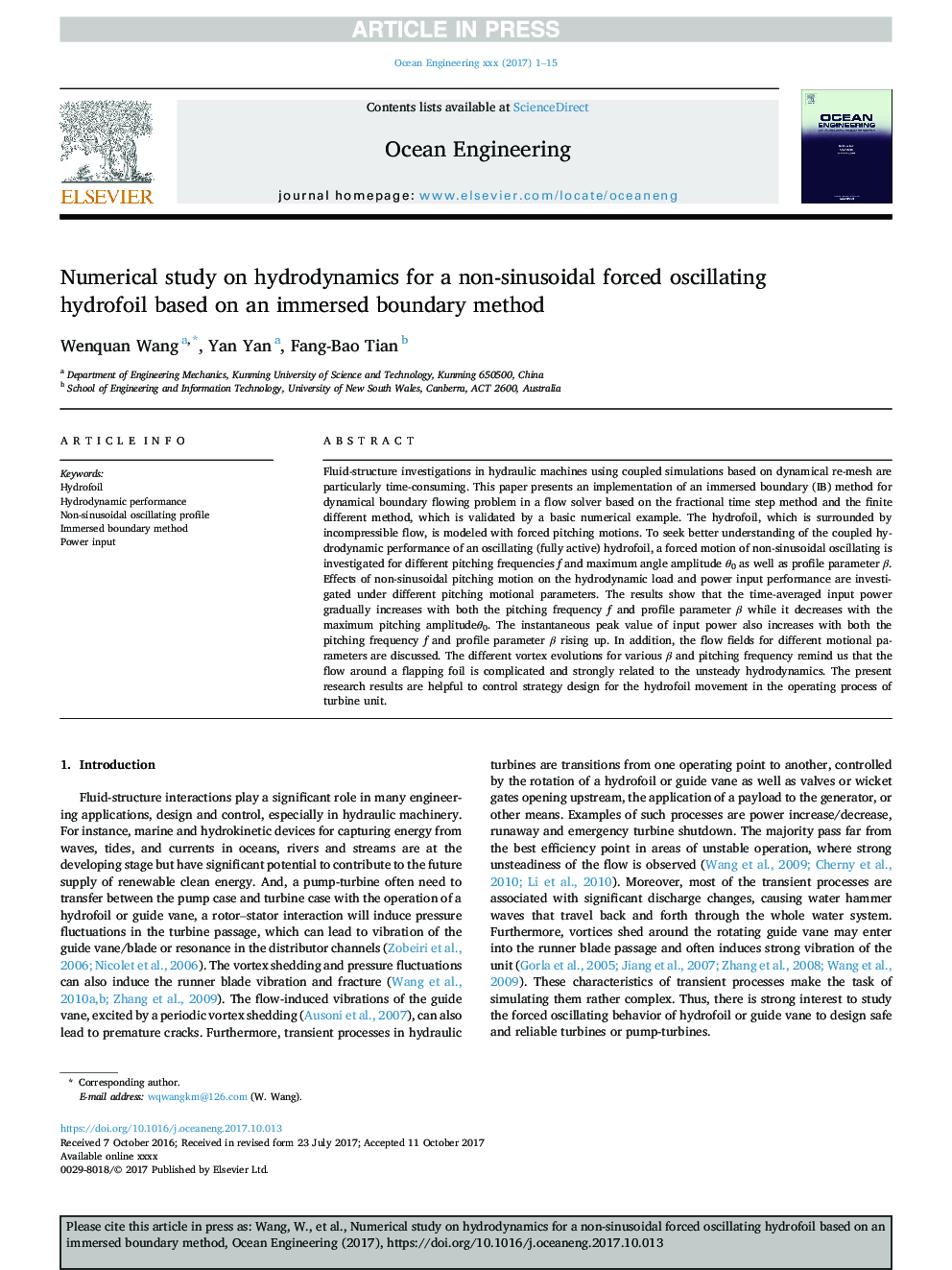| Article ID | Journal | Published Year | Pages | File Type |
|---|---|---|---|---|
| 8063703 | Ocean Engineering | 2018 | 15 Pages |
Abstract
Fluid-structure investigations in hydraulic machines using coupled simulations based on dynamical re-mesh are particularly time-consuming. This paper presents an implementation of an immersed boundary (IB) method for dynamical boundary flowing problem in a flow solver based on the fractional time step method and the finite different method, which is validated by a basic numerical example. The hydrofoil, which is surrounded by incompressible flow, is modeled with forced pitching motions. To seek better understanding of the coupled hydrodynamic performance of an oscillating (fully active) hydrofoil, a forced motion of non-sinusoidal oscillating is investigated for different pitching frequencies f and maximum angle amplitude θ0 as well as profile parameter β. Effects of non-sinusoidal pitching motion on the hydrodynamic load and power input performance are investigated under different pitching motional parameters. The results show that the time-averaged input power gradually increases with both the pitching frequency f and profile parameter β while it decreases with the maximum pitching amplitudeθ0. The instantaneous peak value of input power also increases with both the pitching frequency f and profile parameter β rising up. In addition, the flow fields for different motional parameters are discussed. The different vortex evolutions for various β and pitching frequency remind us that the flow around a flapping foil is complicated and strongly related to the unsteady hydrodynamics. The present research results are helpful to control strategy design for the hydrofoil movement in the operating process of turbine unit.
Related Topics
Physical Sciences and Engineering
Engineering
Ocean Engineering
Authors
Wenquan Wang, Yan Yan, Fang-Bao Tian,
